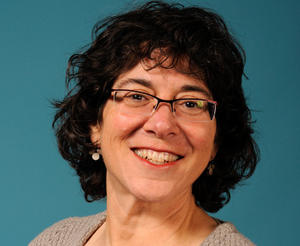Lisa Farbstein, Transportation Security Administration (TSA)TSA: Aviation security "stronger and more secure" ten years later
Lisa Farbstein, a spokesperson for the Transportation Security Administration (TSA); discusses new technologies implemented by TSA and DHS and the agency’s shift to a more risk-based approach to passenger screening

Lisa Farbstein, Transportation Security Administration // Source: Transportation Security Administration
Lisa Farbstein: Since 9/11, the Department of Homeland Security and TSA have taken significant steps to keep people safe and our homeland is stronger today than it was ten years ago. These steps include many enhancements and evolutions to our layered approach to aviation security through new technology deployment screening processes enhancements and applying intelligence analysis to our security measures in real time.
It is indisputable that America’s transportation systems are stronger and more secure than they were a decade ago. TSA has taken significant steps to improve all areas of aviation security since 9/11. While threats persist, passengers traveling on airlines and through our nation’s airports are better protected then they were on 9/11 and transportation systems are more prepared to confront evolving threats.
TSA has fulfilled key 9/11 Commission recommendations, including 100 percent air cargo screening for domestic and international-outbound passenger aircraft and 100 percent watch list matching for passengers on all flights into, out of and within the United States.
Every day we strive to strengthen our partnerships at home and abroad to connect the dots, ensuring that we are working smartly and effectively to combat an elusive enemy.
HSNW: Would you consider it a failure if terrorists successfully brought down a plane, even if 99 percent of other plots had been successfully stopped? In other words is it realistic to expect a 100 percent fool-proof system for airport security?
LF: We are never able to eliminate risk. However, we have better intelligence than ever before and we will continue to evolve and refine our many layers of security. The threats are still there, but we have improved our process, technology and people and we are better equipped today to detect and defer an attack.
HSNW: With state and federal budgets shrinking, funds for airport security are likely to be reduced over the next several years. Given a smaller budget, how would you prioritize airport security?
LF: There is no silver bullet technology. TSA tests and deploys the world’s best screening technology. In fact, TSA has certified ten Explosive Detection Systems and is a global leader in setting the standards for technology that safely screens passengers, luggage, and air cargo.
Our vision for the future is to be more focused on risk-based screening by focusing on the people that we know less about. Additionally, we are looking into the possibility of expedited screening for some individuals.
HSNW: Looking ahead, what do you foresee as the main challenges for aviation security over the next decade?
LF: We recognize that we have challenges ahead, but our intelligence gathering is better now than it has ever been. The enemy is elusive and we will use the intelligence we gather to continually look at ways to improve upon our layered approach to aviation security that includes intelligence, behavioral detection officers, canine teams, and federal air marshals, as well as other measures both seen and unseen. Alone each layer enhances security. Together they provide a formidable defense that detects threats and deters potential attackers to keep the traveling public safe.
